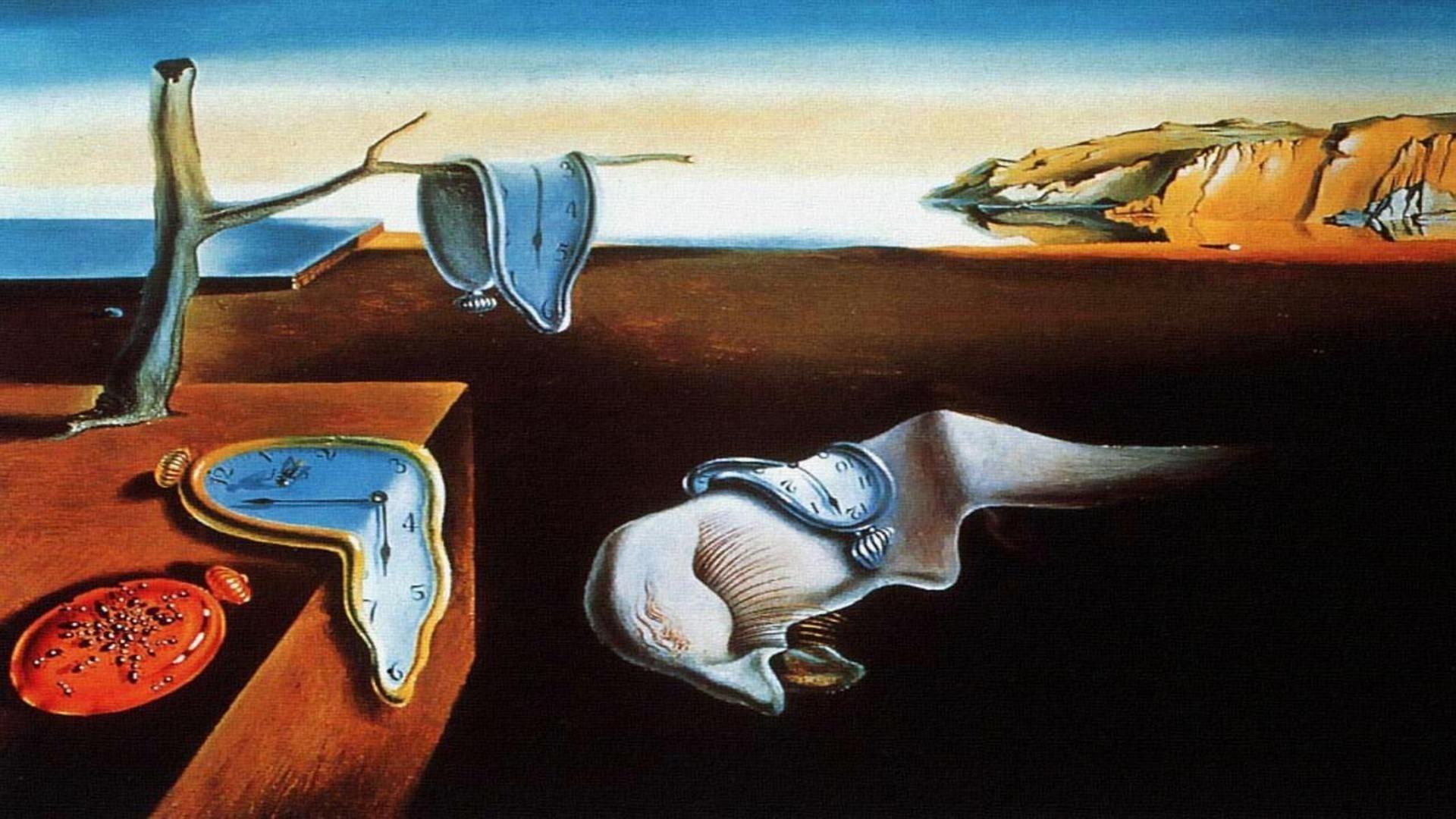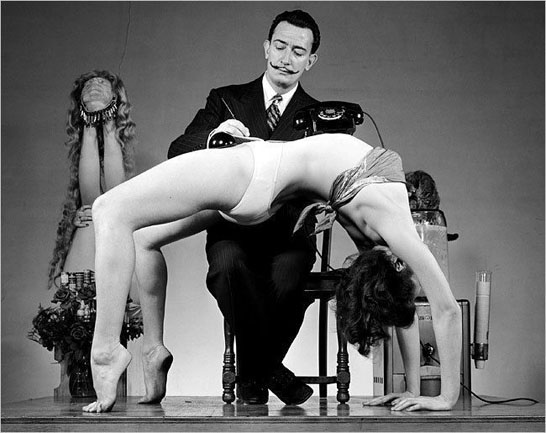
He met Gala Eduard (pictured together, below) in 1929 while she was visiting Cadaques with her husband, and she became his lover and inspiration. They later married and moved to Port Liligat.


Right after completing his most famous painting, Persistence of Memory (below), he was expelled from the surrealist group in 1934. He began experimenting with art that depicted science and religion. He escaped Europe during WWII, and had his first major exhibit in the Museum of Modern Art in 1942.

After his surrealist period had passed, he painted 19 large canvases with major historical, religious, or scientific scenes--many of which are in American Art Museums today. Pictured below is the Sacrament of the Last Supper (left) and The Discovery of America by Christopher Columbus.


After many solo, international exhibits, Dali's health began to fail in 1982 when his wife, Gala, died. Although they had an unusual relationship (he enjoyed the company of other young girls, and she allegedly served him a poisoned cocktail once), he lost his will to live after her passing. Some historians believe he may have had a few attempted suicides in his final years. Ultimately, he was burned in a house fire, and had undergone surgery for a pacemaker by 1986. He spent the majority of the rest of his life alone in his apartment until his death on January 23, 1989. He produced over 1,500 paintings during his life.
I chose Dali for my blog post because I love how he used all types of mediums, painting sizes, and inspirations. Additionally, I enjoy how real each piece of the painting is without the painting being realistic. For instance, in Persistence of Memory, the clock looks exactly like a melted clock should look, but there would never be a time or place where melted clocks would appear in real life. To me, his paintings are very representative for how Dali thinks of the subject. This is interesting, since he spent a majority of his career focusing on painting unconscious thoughts and feelings (see the second photo below). I am not familiar with art critiques or artists in general, but Dali seems to portray the meaning of his paintings clearer than other artists that I looked up in this blog project. Similarly, the fact that he was expelled from his surrealist group and continued to paint and create art is amazing to me. Not only do I enjoy his art, but I enjoy his life story and reading about who he was as a person. He was beyond passionate about art and enjoying life. He was once quoted, "every morning upon awakening, I experience a supreme pleasure: that of being Salvador Dali!"

 Melancholy, Atomic, Uranic Idyll
Melancholy, Atomic, Uranic Idyll Eccentric Genius
Eccentric Genius  The Temptation of St. Anthony
The Temptation of St. Anthony The Lugubrious Game
The Lugubrious Gamehttp://cultura.studionews24.com/dali-genio-e-follia-in-scena-a-roma/
http://www.salvadordali.com/biography/
http://artanddesigninspiration.com/salvador-dali-eccentric-genus/
https://artglob.wordpress.com/2011/06/13/salvador-dalis-guide-to-making-art/
No comments:
Post a Comment